April 23, 2023
Untested Evidence: An Analysis of the Backlog of Sexual Assault Kits in the United States
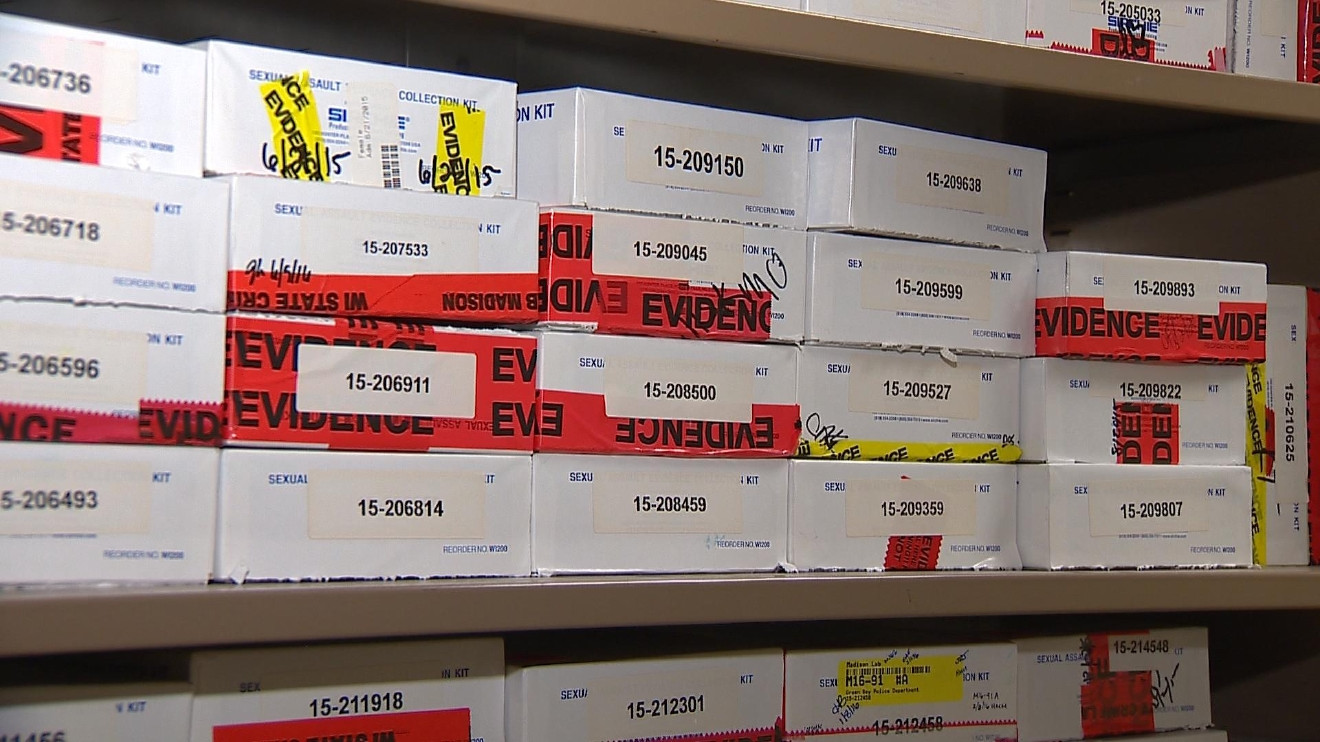
The Impact of Delayed Testing of Sexual Assault Kits:
The backlog of untested sexual assault kits in the United States represents a significant ethical, moral, and economical challenge to the investigation and prosecution of sexual violence. This paper will examine the causes and consequences of the backlog, as well as the efforts that have been made to address it to develop recommendations for reducing the backlog and improving the response to sexual assault.
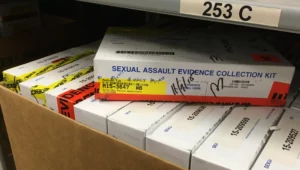
On average, there are about 463,634 victims of rape and sexual assault each year in the United States. This means every 68-73 seconds a person is being sexually assaulted. 1 out of every 6 American women, and 1 out of every 21 American men have been the victim of sexual assault. Only 16-40% of sexual assaults are reported to law enforcement, meaning only 310 out of every 1,000 sexual assaults are reported to the police. Out of these rapes, 5% of women will become pregnant.1 What is being done about this? What can be done? If the victim wishes to report the crime, they may choose to undergo a forensic medical examination to collect any evidence left behind from the assault. This procedure is used with a sexual assault kit.
A sexual assault kit, also known as a rape kit or SAK, is a collection of physical evidence, such as DNA and other forensic evidence, gathered by medical professionals or trained personnel in a hospital or healthcare facility from a victim of sexual assault.2 The purpose of the kit is to help identify and prosecute the perpetrator of the sexual assault and hopefully bring closure to the victim.
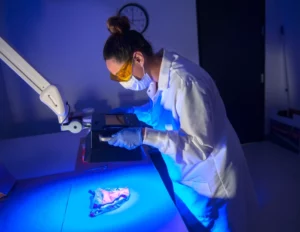
The kits include many different items, such as swabs to collect DNA evidence on the victim’s body, bags for collecting the victim’s clothes and other potential evidence, documentation forms to gather personal information of the victim, as well as the methodology of the procedure, and instructions for the use of each item in the kit to be used properly for minimal discomfort to the victim, however, the victim has the choice to refuse any part of the exam that makes them uncomfortable.3 Once the kit is completed, it is sent to a forensic laboratory for testing and analysis, which will hopefully be enough DNA evidence to identify the perpetrator of the assault, establish a timeline of the event, and provide enough information for law enforcement officials to compare profiles of DNA against a large database run by the FBI called the Combined DNA Index System, also known as CODIS, if the perpetrator is unknown to the victim, but already in the system for other known assaults.
Rape Kit Analysis SOP (Standard Operating Procedure)
The purpose for having SOPs (Standard Operating Procedures) is to provide guidelines and expectations to respond properly to Sexual Assault Investigations involving adult or child victims. This insures that the process is victim-centered and exerting the least amount of trauma to the victim. However, there may not be an up to date SOP for law enforcement to follow depending on the state. According to the City of Madison Police Department, their Standard Operating Procedure includes different procedures depending on if the sexual assault involves an adult or child.4
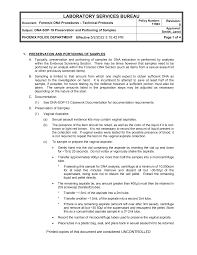
Adults should be offered trauma-informed, which entails investigations being conducted with an understanding of the effects of trauma on survivors. This includes the emotional and physical responses victims may or may not experience, as well as prioritizing the victims feelings, safety, choice, and control of the situation at hand. If the victim has Limited English Proficiency (LEP), the initial responding officer shall take reasonable steps to provide free language assistance services for the victim to be able to communicate what has happened to them. The initial officer should offer to contact an advocate from the Rape Crisis Center to support the victim through the reporting and evidence collection process. The officer conducting the interview with the victim shall spend time building a positive apport with the victim, assuring their physical safety and getting them medical care as soon as they are able to. The interview should be open-ended, narrative inviting questions. The victim should be allowed to say their statement with little to no interruptions. The Officer-in-Charge (OIC) of the circumstances of the incident needs to be notified.4 The Officer-in-Charge will then determine if the assault is a 1st degree sexual assault (against someone who is a minor or otherwise can not give consent) or 2nd degree sexual assault (any unwanted sexual contact made without consent.)6 The collection of any available evidence from the victim, such as photos, clothing, and biological items should be using the Meriter Hospital’s Forensic Nurse Examiner (FNE) program when collecting the evidence from the victim, as well as recommending a medical forensic hospital examination if the assault occurred no more than 120 hours prior to the time it is reported shall be done. As with adult victims, children should be offered trauma-informed and culturally competent services and supports when available, as well as free language assistance services to the victim if the victim has Limited English Proficiency (LEP.) The primary officer of the case shall notify Dane County Human Services (DCHS) within 12 hours of the reported sexual assault of the child, as well as the child’s parents or legal guardians within 24 hours of the assault if appropriate. When a sexual assault has happened to a child under the age of 16, the investigating officer should gather as much information as possible without interviewing the victim. The officer will notify the Officer-in-Charge (OIC) who will then contact the Special Victims Unit (SVU) Lieutenant or Special Victims Unit Detective Sergeant prior to conducting a detailed interview or physical exam. The investigation will then be led by the SVU Lieutenant or SVU Detective Sergeant assigned to the case.4
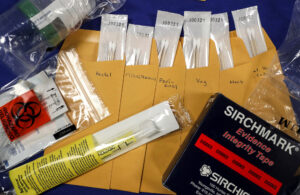
What are the causes and consequences of the backlog of untested sexual assault kits in the United States, and what efforts have been made to address the issue?
The backlog of untested sexual assault kits (SAKs) in the United States is a significant issue that has recently gotten an increase in attention within the past few years. Many of these SAKs across the country have not been tested, which has led to a major backlog of thousands of untested kits. There are many reasons why this backlog exists. One main factor is a lack of funding and resources for forensic labs to process and analyze the kits. On average, testing one kit costs between $1,000 and $1,500. The lack of essential funding in places, such as crime labs and law enforcement agencies creates a lack of personnel to be able to complete these tests, as well as a lack of technology to track and transport untested kits to be tested promptly.8 Another factor is a lack of protocols and policies of what should be done with a test since there is no set written policies for all tests. Due to these outdated or unclear lab policies, crime labs, and law enforcement agencies have had a misunderstanding about what types of kits can or should be submitted for testing. This can lead to law enforcement agencies not dedicating the time or resources to sexual assault cases. There is also a large bias in law enforcement due to negative stereotyping when it comes to sexual assault cases, which essentially affects how the cases and tests are handled. Lack of training and knowledge gaps play another role in the backlog. This impacts not only the victims but the perpetrators and forensic DNA when a kit is being considered for testing. Having a lack of patience and understanding of how trauma affects a victim’s memory and behavior can lead to personnel in law enforcement not believing the victim’s story due to inconsistencies in what the victim is able to recall of the assault and how the victim is behaving, potentially calling them “uncooperative.” This is incredibly concerning for the case because the victim will no longer trust the personnel and process of what is being done in fear of blame, privacy concerns, or poor treatment, which can lead to the personnel potentially closing the case since they believe there isn’t enough found evidence with the inconsistencies in their story. When law enforcement personnel do not fully understand the value of DNA evidence when a kit is submitted and tested, the potential of solving the case is prevented and the perpetrator will not be found.8 There are criminal patterns with sex offenders that law enforcement personnel sometimes do not catch because of their lack of knowledge regarding these patterns and how they affect victims of assault. Perpetrators of the assault use shame and fear to lead victims to believe that no one will believe their assault happened, which can lead to “uncooperative” behavior when reporting the incident to law enforcement. Lastly, whether the identity of the perpetrator is known is another important aspect of kit testing. Most jurisdictions only want to test kits in cases where the perpetrator is unknown so they can potentially identify the suspect through the DNA evidence found from the kit. However, SAKs are highly valuable for more than just identifying an unknown suspect. Testing all kits can link unsolved crimes to serial offenders, confirm a suspect’s contact with the victim, corroborate the victim’s account of the assault, and allow innocent suspects to be exonerated.10 This ensures that any links between crimes are made regardless of the relationship between the victim and the perpetrator.
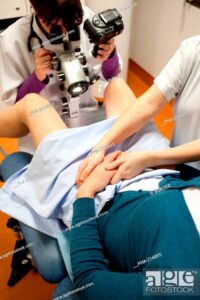
The consequences of the backlog affect not only the victims but the justice system greatly. Victims of assault may experience further trauma with the delayed or unsolved case, and the perpetrators are potentially still committing more crimes. Victims may not come forward with their assault to authorities in fear and frustration they will just be another name in the untested pile. This undermines the credibility of the criminal justice system as well. Some local states and Federal Government have addressed the backlog and made efforts to provide funding and technical assistance to state and local governments to test backlogged kits and improve their systems of how they handle sexual assault cases now. As of 2021, the Sexual Assault Kit Initiative has provided over $200 million in funding to 45 jurisdictions across the country.11 Some states have passed laws requiring the testing of all SAKs. Others have provided additional funding for forensic labs to address and start testing kits in the backlog. Private organizations have also helped in advocating and providing funding for testing kits.
While progress has been made in recent years, the backlog remains a significant issue in many parts of the country.12 Continued efforts to provide funding, improve training and protocols, and increase coordination among agencies will be necessary to fully address the backlog and ensure justice for victims of sexual assault.
- Berkowitz, S. (n.d.). Statistics. RAINN. Retrieved April 23, 2023, from https://www.rainn.org/statistics. ↵
- Berkowitz, S. (n.d.). What is a sexual assault forensic exam? RAINN. Retrieved April 23, 2023, from https://www.rainn.org/articles/rape-kit. ↵
- Heart, J. (n.d.). Endthebacklog.org. Retrieved April 23, 2023, from https://www.endthebacklog.org/what-is-the-backlog/what-is-a-rape-kit-and-rape-kit-exam/. ↵
- P.D., M. (n.d.). Reporting procedure purpose procedure – madison, Wisconsin. CITY OF MADISON POLICE DEPARTMENT STANDARD OPERATING PROCEDURE: Sexual Assault Investigations. Retrieved April 23, 2023, from https://www.cityofmadison.com/police/documents/sop/ReportingProcedure.pdf. ↵
- P.D., M. (n.d.). Reporting procedure purpose procedure – madison, Wisconsin. CITY OF MADISON POLICE DEPARTMENT STANDARD OPERATING PROCEDURE: Sexual Assault Investigations. Retrieved April 23, 2023, from https://www.cityofmadison.com/police/documents/sop/ReportingProcedure.pdf. ↵
- Phelps, S. (2020, February 20). Is sexual assault a felony in the first or second- degree?: The Law Office of Shane Phelps, P.C. Law Office of Shane Phelps, P.C. Retrieved April 23, 2023, from http://www.shanephelpslaw.com/the-atticus-files/2020/february/is-sexual-assault-a-first-degree-or-second-degre/#:~:text=The%20difference%20between%20first%20and%20second%2Ddegree%20sexual%20assault%20affects,penalty%20of%205%2D99%20years.. ↵
- P.D., M. (n.d.). Reporting procedure purpose procedure – madison, Wisconsin. CITY OF MADISON POLICE DEPARTMENT STANDARD OPERATING PROCEDURE: Sexual Assault Investigations. Retrieved April 23, 2023, from https://www.cityofmadison.com/police/documents/sop/ReportingProcedure.pdf. ↵
- Heart, J. (n.d.). Endthebacklog.org. Retrieved April 23, 2023, from https://www.endthebacklog.org/what-is-the-backlog/what-is-a-rape-kit-and-rape-kit-exam/. ↵
- Heart, J. (n.d.). Endthebacklog.org. Retrieved April 23, 2023, from https://www.endthebacklog.org/what-is-the-backlog/what-is-a-rape-kit-and-rape-kit-exam/. ↵
- Berkowitz, S. (n.d.). Addressing the rape kit backlog. RAINN. Retrieved April 23, 2023, from https://www.rainn.org/articles/addressing-rape-kit-backlog. ↵
- Strom, K. J., Roper-Miller, J., Jones, S., Sikes, N., Pope, M., & Horstmann, N. (2009, October). Survey of law enforcement forensic evidence processing 2007. Final Report. Washington, DC: U.S. Department of Justice, National Institute of Justice.. ↵
- Strom, K. J., Roper-Miller, J., Jones, S., Sikes, N., Pope, M., & Horstmann, N. (2009, October). Survey of law enforcement forensic evidence processing 2007. Final Report. Washington, DC: U.S. Department of Justice, National Institute of Justice.. ↵
Tags from the story
Recent Comments
Gaitan Martinez
Really glad to have read this article because sexual assault is a scary issue, and it’s a shame people go through it. I imagine having to experience trauma, the kits don’t sound fun. Then there are backlogs which just complicate everything? It’s a crazy issue, and I’m glad I’m learning about this, sexual assault is already a tramatic enough, and it doesn’t sound easy to just report it (if they can) and move on.
11/05/2023
1:16 pm

Christian Lopez
Sunyte, your article really hit home for me. I am currently work at the San Antonio District Attorney’s office and I see a lot of sexual assault cases where I work. I have seen how important these kits are for building a case or for a jury to convict potential rapist. I did not know that there was such a sever problem with the backlog of these tests. I breaks my heart to see that is a truth we are facing in todays world.
08/05/2023
1:16 pm